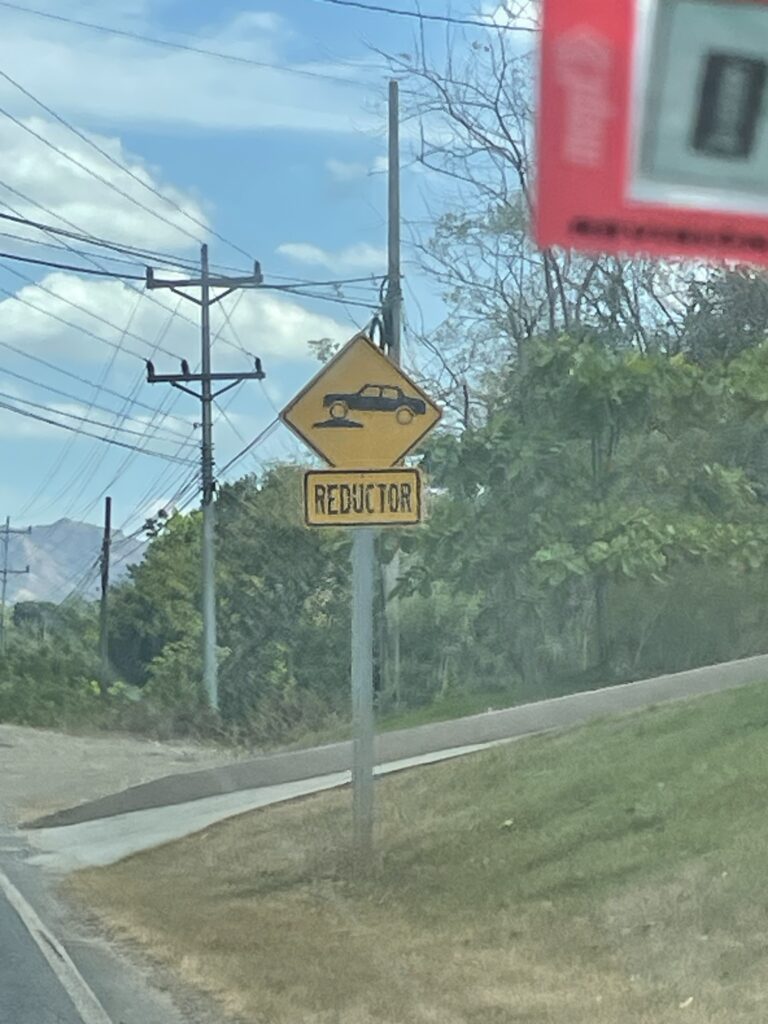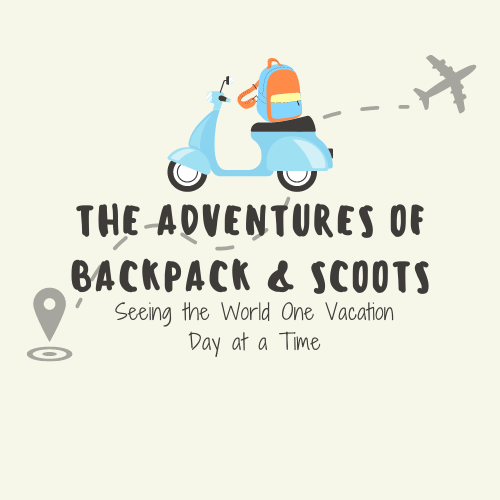Here is a prerequisite parade of helpful essentials for your expedition:
Pura Vida: Pure Life, and you will see and hear this phrase a lot as they use it to mean Hello, Goodbye, and other simple greetings.
– The locals are called Ticos (Men/Mixed groups of people) or Ticas (Women).
– The language spoken here is Spanish which means you will find most signs, instructions, menus, etc in that language. (see separate post about Spanish Language and Signs)
Driving:
– Costa Rica is right-side of the road driving but all speed limits and distances are in Kilometers.
– If you plan to rent car use WAZE (App) to get around. However, download a copy of the road maps of Costa Rica from Google maps to your phone just in case you lose internet signal and need a backup map while driving.
– Pedestrians DO NOT have the right of way in Costa Rica, so if you stop for them on a busy road, you might be asking to be honked at by the person behind you at the least and rear ended at the worst.
– Yes, you can drive at night (even though its not recommended), but I would only go short distances like from a restaurant to your Airbnb kind of thing. Even in the most populated areas the street lights and lane lines don’t always exist.. it can be scary to drive it and even scarier to think about going off the side of a cliff because they don’t always have guard rails either..
– The roads are not always the best and I would say probably the worst I have ever driven on. If it says it will take you 2 hours to get somewhere, it will be every bit of that 2 hours if not longer so plan ahead. Get a 4×4 car with insurance- this will be mandatory if you plan on going from location to location around the country. The pot holes, rocky roads, dips, drop offs, and lack of guard rails demand this type of car.
– By law, you must carry your driver’s license and passport with you while you drive. If you’re stopped by the traffic police, you’ll be asked to show both pieces of identification as a non-resident.
– Bridges are one lane A LOT and are often indicated on who has the right of way and a sign saying PUENTE ANGOSTO to show Narrow Bridge. Even if you have the right of way, proceed with caution as some drivers won’t know to stop or if they are already on the bridge that they have the right of way.
– Reminder that everything is in Spanish including road signs so learn some Spanish or print a guide on what all the road signs mean ahead of time. (see post on Spanish Language and Signs) Note that on the freeways the speed limit can change abruptly so stay alert! Quick tip, Reductor means Speed Bump, of which there are a lot and not all marked so pay attention to the people slowing down suddenly in front of you. Some of those Reductors will Arresto your Momento for sure!

Uber/Taxi:
Uber is illegal in Costa Rica but it still exists. You can call an Uber the same way you would anywhere else but anticipate that the driver will want you to sit up front with them so they don’t get into trouble.
Taxi’s are RED! Make sure you know this; tell the driver to use the meter; and pay in Colones.
Gas Stations:
These are full service only so when you pull up you will tell the attendant what type of gas you need and indicate to them whether you want a full tank or if you are only looking for so much. They will come over with a card reader or take your cash for payment.
Internet: ESIM vs SIM card
If you have a phone that is carrier locked (google on how to find out if yours is locked or not- even if its older), you can only use an ESIM or SIM card through that carrier.
If you have a phone that is not carrier locked, you can buy a SIM card on location (usually there is a store in the airport or around the airport- although all stores by. Liberia airport are closed on Sunday if you fly in there). Or you can download an ESIM (we use the App AIRALO) to get data on your phone. Its pretty easy to follow the steps they give you but reminder that you need to have internet to download that ESIM so do it in the airport before getting your car and heading out on the roads.
Calling and Texting:
Everyone outside of the US will recommend that you download WhatsApp as this is what so many other countries use for their texting service. We recommend it as well! Tour guides, hotels, excursions, etc will use this texting service a lot in Costa Rica.
Money:
The National currency here is Colones. It’s colorful money with pictures of animals on it, what more could you want 😉 I would recommend at least getting $100 worth of Colones from your bank before going for stuff you might not be able to use your credit card for.
– Make sure you use a credit card that does not have a foreign transaction fee and ALERT your credit card company that you will be traveling ahead of time.
– If you use an ATM down there, go to one that is well lit and remember that ATM transaction fees can be crazy (like $7 each time you withdraw money) so try to take out as much as you think you will need at a time.
– Download a currency converter app so you can check pricing on items. I recommend Units Plus.
Tipping:
Most places add a 10% charge to your bill and you will see that listed at the. bottom, that is the tip. (On top of the 13% tax you will see on there as well) Obviously you can tip on top of this if you want, but you don’t have to.
Safety:
Do not leave anything visible in your car unless you don’t care if your car gets broken into and your stuff taken. Car theft is a HUGE thing there. Also don’t leave your stuff on the beach and go into the ocean.. take it with you in a dry bag or ALWAYS have your eyes on it. Other than that, don’t walk down dark streets or on beaches at night, but that is kind of a no brainer 😉
Other Fun things to note:
– Imperial is the National Beer of Costa Rica, I highly recommend the regular over the Light version 😉
– Costa Rica does not have any military! WHAT?!!?
Costa Rica Blogs:
Two recommendations on other travel blogs that I found TONS of tips on:
https://mytanfeet.com/
https://costaricatravelblog.com/

Leave a Reply